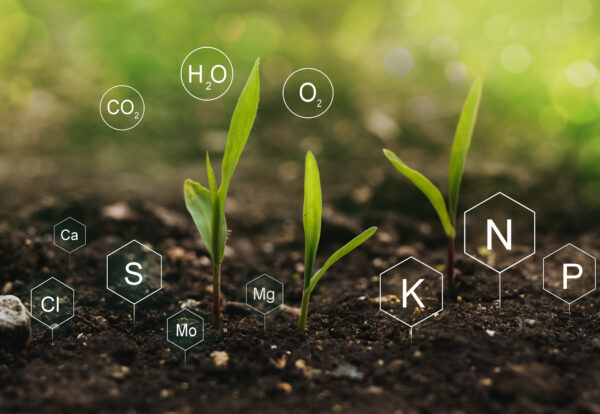Mineral Fertilizers with Sustained Release
Solubility is a decisive factor affecting the availability of nutrients contained in fertilizers, needed and taken up in specific amounts by specific plants. Mineral fertilizers available on the market differ in both the percentage of nutrients and their solubility. There are many factors, such as pH, temperature, soil type and amount of rainfall, that affect the degree of solubility of the elements contained in fertilizers. The sustained release of mineral multicomponent fertilizers is one of the most important characteristics that determine the effectiveness of the fertilizer used.

Sustained Release vs. Fast-Soluble Fertilizers
We can divide granular mineral fertilizers into fast-soluble and sustained release fertilizers. In the case of the former, there is a risk that some of the elements will be leached deep into the soil complex and plants will not use their full potential. Sustained release mineral fertilizers have a gradual release period and precise dosage of macronutrients. In GoudenKorrel® brand sustained release fertilizers, nutrients such as sulfur, potassium, calcium, magnesium and sodium, are already 50% available in the first stage, which is 15 days after fertilizer application. As the process progresses over time, this availability increases. The G2D Nodens Technology™ used in the production of Goudenkorrel® mineral fertilizers makes the granules have an sustained activation time, and the decomposition process takes about 3 months. The elements are released slowly, which prolongs their duration of action in the soil and prevents rapid leaching. The rate of nutrient release also depends on temperature and soil moisture.
Sustained Release Fertilizers in the Era of Sustainable Agriculture.
As recently as 10-20 years ago, when comparing the performance of sustained release and conventional fertilizers, only yield and aesthetic features were considered. It is only in recent years, when the use of sustained release mineral fertilizers has become more popular, that attention has been paid to matching the release of nutrients from them to the nutritional needs of the plants and the resulting reduction in losses of these nutrients. It should be remembered that in the era of sustainable agriculture, the environmental aspects of farming operations are crucial. Closely adjusting fertilizer doses to the rate of uptake and the nutritional needs of the plants are opportunities we can exploit to increase fertilizer efficiency and avoid nutrient losses. Another of the solutions to this problem is the use of fertilizers with slow, controlled release of ingredients. To meet this demand, the global fertilizer industry is constantly improving and launching new slow-release fertilizers, which are characterized by a staggered release of nutrients, increasingly tailored to the rate of uptake by plants (J. Korzeniowska, 2009).
Why Choose Goudenkorrel® Sustained Release Mineral Multicomponent Fertilizers?
In an era when technology is marching forward and fertilizer prices are rising at an astonishing rate, new developments are helping farmers make choices about applying the right type of fertilizer for their crops. In today’s reality, there is no room for random choices. The secret of GoudenKorrel® sustained release fertilizers lies in the granules produced through patented G2D technology, developed to process the natural mineral polyhalite. As the only manufacturer of multicomponent fertilizers in the world, we have developed and patented a method of producing active polyhalite, so we can maintain a high enough content of ingredients and a proper release curve!


